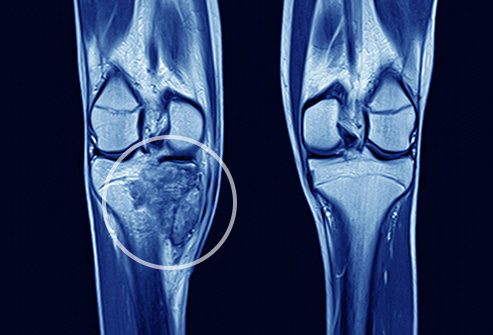W.B.C.S. Examination Notes On – Bone Tumor – Medical Science Notes.
When cells divide abnormally and uncontrollably, they can form a mass or lump of tissue. This lump is called a tumor. Bone tumors form in your bones. As the tumor grows, abnormal tissue can displace healthy tissue. Tumors can either be benign or malignant.Continue Reading W.B.C.S. Examination Notes On – Bone Tumor – Medical Science Notes.
Benign tumors aren’t cancerous. While benign bone tumors typically stay in place and are unlikely to be fatal, they’re still abnormal cells and may require treatment. Benign tumors can grow and could compress your healthy bone tissue and cause future issues.
Malignant tumors are cancerous. Malignant bone tumors can cause cancer to spread throughout the body.
Osteochondromas
Benign tumors are more common than malignant ones. According to the American Academy of Orthopaedic Surgeons (AAOS), the most common type of benign bone tumor is an osteochondroma. This type accounts for between 35 and 40 percent of all benign bone tumors. Osteochondromas develop in adolescents and teenagers.
These tumors form near the actively growing ends of long bones, such as arm or leg bones. Specifically, these tumors tend to affect the lower end of the thighbone (femur), the upper end of the lower leg bone (tibia), and the upper end of the upper arm bone (humerus).
These tumors are made of bone and cartilage. Osteochondromas have been considered to be an abnormality of growth. A child may develop a single osteochondroma or many of them.
Nonossifying fibroma unicameral
Nonossifying fibroma unicameral is a simple solitary bone cyst. It’s the only true cyst of bone. It’s usually found in the leg and occurs most often in children and adolescents.
Giant cell tumors
Giant cell tumors grow aggressively. They occur in adults. They’re found in the rounded end of the bone and not in the growth plate. These are very rare tumors.
Enchondroma
An enchondroma is a cartilage cyst that grows inside the bone marrow. When they occur, they begin in children and persist as adults. They tend to be part of syndromes called Ollier’s and Mafucci’s syndrome. Enchondromas occur in the hands and feet as well as the long bones of the arm and thigh.
Fibrous dysplasia
Fibrous dysplasia is a gene mutation that makes bones fibrous and vulnerable to fracture.
Aneurysmal bone cyst
An aneurysmal bone cyst is an abnormality of blood vessels that begins in the bone marrow. It can grow rapidly and can be particularly destructive because it affects growth plates.
There are also several types of cancer that produce malignant bone tumors. Primary bone cancer means that the cancer originated in the bones. According to the National Cancer Institute (NCI)Trusted Source, primary bone cancer accounts for less than 1 percent of all types of cancer.
The three most common forms of primary bone cancers are osteosarcoma, Ewing sarcoma family of tumors, and chondrosarcoma.
Osteosarcoma
Osteosarcoma, which occurs mostly in children and adolescents, is the second most common type of bone cancer. This usually develops around the hip, shoulder, or knee. This tumor grows rapidly and tends to spread to other parts of the body.
The most common sites for this tumor to spread are areas where the bones are most actively growing (growth plates), the lower end of the thighbone, and the upper end of the lower leg bone. Osteosarcoma is also sometimes known as osteogenic sarcoma.
Ewing sarcoma family of tumors (ESFTs) strikes adolescents and young adults, but these tumors can sometimes affect children as young as 5 years old. This type of bone cancer usually shows up in the legs (long bones), pelvis, backbone, ribs, upper arms, and the skull.
It begins in the cavities of the bones where the bone marrow is produced (the medullary cavities). In addition to thriving in bone, ESFTs can also grow in soft tissue, such as fat, muscle, and blood vessels. According to the NCITrusted Source, African-American children very rarely develop ESFTs. Males are more likely to develop ESFTs than females. ESFTs grow and spread rapidly.
Chondrosarcoma
Middle-aged people and older adults are more likely than other age groups to develop chondrosarcoma. This type of bone cancer usually develops in the hips, shoulders, and pelvis.
Secondary bone cancer
The term “secondary bone cancer” means that the cancer started somewhere else in the body and then spread to the bone. It usually affects older adults. The types of cancer most likely to spread to your bones are:
- kidney
- breast
- prostate
- lung (particularly osteosarcoma)
- thyroid gland
Please subscribe here to get all future updates on this post/page/category/website


 +919674493673
+919674493673  mailus@wbcsmadeeasy.in
mailus@wbcsmadeeasy.in







































































































